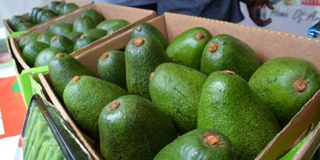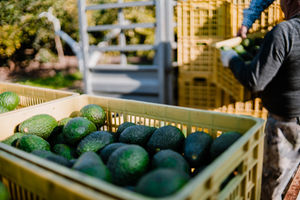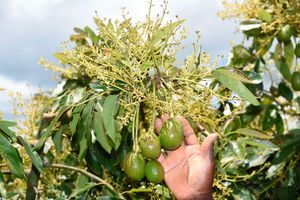
Avocado Exporters Association of Kenya CEO Joseph Wagurah in Nairobi on January 30, 2025.
Avocado Exporters Association of Kenya (AEAK) Chief Executive Joseph Wagurah talks to Sammy Waweru on the state of the business, including the impact of increased phytosanitary services fee.
What are the international market trends for Kenyan avocados and how do they compare with exports from leading producing nations like Mexico and Peru?
Kenya’s avocado exports have been on an upward trajectory since 2019, with volumes rising from 79,000 tonnes in 2019 to 123,000 in 2023.
The value of these exports has also grown, reaching Sh18 billion in 2023, up from Sh9.9 billion in 2021.
Kenya leads Africa in avocado exports, with major destinations being Europe and the Middle East. While Mexico and Peru are the world’s top avocado exporters, their production is seasonal.
Kenya benefits from year-round production due to its equatorial location and the cultivation of multiple varieties such as Hass, Pinkerton and Fuerte.
Our export business is expanding and holds potential, particularly due to the country’s proximity to China, a huge market accessible via a direct shipping route that bypasses the Suez Canal.
This gives Kenya advantage over Mexico and Peru, which are geographically beyond key emerging economies in the Gulf, East Asia and the Far East.
Despite challenges, the avocado remains Kenya’s leading fruit export.
What challenges do local avocado exporters face?
The first is the availability of true-to-type seedlings with consistent maturity and freedom from diseases. Only a handful of registered nurseries meet the required standards and can supply the quantities needed.
Though we have been growing avocados for long – but for commercial purposes – we are still grappling with agronomy services for the export production of high-quality fruits.

Kenya’s avocado exports have been on an upward trajectory since 2019.
Pests are another challenge. The European Union (EU) classifies Kenya as a source with a high risk of priority and quarantine pests, particularly the False Codling Moth (FCM). We must have a systems approach to eradicate this pest.
Every production site must be inspected before harvesting or packing to ensure FCM control measures are in place before a phytosanitary permit is issued.
Control measures for this pest are costly. Any presence or signs of its existence lead to a 100 percent rejection of the consignment at the port of entry.
On Maximum Residual Levels (MRLs), the EU has banned several plant protection products (PPPs), making their use in Kenya unacceptable. Even the approved PPPs must not exceed the set MRLs. Sampling is at the port of entry, and if the MRLs exceed, the consignment is rejected.
Due to this, growers face the dilemma of controlling pests without exceeding MRLs or using prohibited pesticides.
Another barrier to avocado export is the phytosanitary services certificate levies by the Kenya Plant Health Inspectorate Service (Kephis). The inspectorate issues the Export Phytosanitary Certificate. However, the new implementation Phytosanitary Services Certificate fee has increased by 88 percent.
This makes our avocados uncompetitive in the global market, potentially jeopardising thousands of jobs and services in the value chain.
How will these increased charges affect business for exporters and farmers?
Before July last year, a Phytosanitary Certificate was Sh1,500 per consignment. However, Kephis introduced a charge of 50 cents per kilo, along with an additional Sh500 for the Phytosanitary Certificate. A container of avocados is approximately 24 tonnes, meaning the total charge at the moment is Sh12,500.
This increase will have ramifications for exports. Some exporters may close shop, leading to job losses across the value chain, including harvesters, transporters and store workers and a reduction in taxes for the government.
Farmers who have invested in avocado – an endeavour that requires long-term commitment – will be hit hard. The situation may open doors to exploitation by middlemen, affecting farmers and buyers alike. We could end up like in the 1990s when avocados were bought at rock-bottom prices by a few monopolistic exporters.
Have you had an impact analysis on how the fee increase may affect the competitiveness of Kenya’s avocados?
Our avocados are being exported to Europe around the Cape of Good Hope in South Africa due to the closure of the Suez Canal. This route takes a minimum of 45 days, during which the quality of the fruits is affected.
The increased cost of the plant passport (Phytosanitary Certificate) will make Kenyan avocados less affordable in the market and lead to closure of the export businesses.
Tanzania, Uganda, South Africa and other countries on the continent are likely to capture a larger share of the market.
What is the best way to maintain the momentum of our exports and prevent job losses?
Avocado exporters are more than willing to pay for the Phytosanitary Certificate and inspection. However, there has to be a discussion involving exporters, relevant stakeholders and Kephis to reach an agreeable figure.
It is unconstitutional for the inspectorate to make such decisions without proper public participation.
Read: Kenya climbs ladder in the global avocado production rankings
Sustainability and compliance with international regulations are key to market access. What steps are exporters taking to meet environmental and phytosanitary standards?
Kenya has invested in a production system that meets global standards, as evidenced by private certification across production sites, including Global GAP, Rainforest Alliance and SMETA.
It should be noted that 70 percent of avocados are grown by smallholders who require ongoing training and support to maintain quality, manage pests and prevent MRL.
We urge county and national authorities to restore and strengthen agricultural extension services.
Funding from national and multinational donors is key to sustaining avocado production.
While Kenya has met the strict export requirements set by China, India, Malaysia and the EU, continuous training remains essential.
What programmes have been put in place to ensure smallholder avocado producers are adequately supported, fairly compensated and integrated into the export value chain?
Smallholder farmers should ideally be clustered into legal groups in order to control their production through sustained training.
They need to know the right pesticides, time of spray and so on. AEAK is keen on creating awareness on good practices and pest and disease control measures. Measurement of dry matter content is also important to forestall harvesting of immature fruits. We are using training to keep them informed.
Which untapped markets or regions have growth potential for Kenyan avocado? What strategies are being put in place to penetrate these markets?
Emerging markets in the Far East, India and China present opportunities as they have large populations with considerable purchasing power. Kenya is strategically located to access these markets without relying on the volatile Suez Canal.
We call on the government to help eliminate tariff barriers, such as the 30 percent import duty on Kenyan avocados in India.









